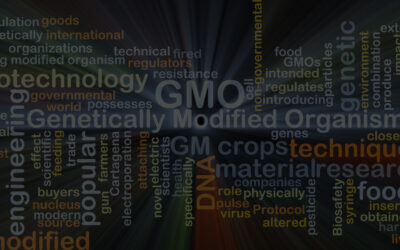by David Schubert
A survey shows that exposure to potentially health-threatening levels of glyphosate has escalated over the past 20 years, yet regulators are turning a blind eye, writes Professor David Schubert

Professor David Schubert
San Diego scientists are helping to expose a major public health hazard that affects every person in the nation. In 2017 Dr. Paul Mills and associates at the University of California School of Medicine, San Diego published a study in the Journal of the American Medical Association,[1] showing that the amount of the probable carcinogen glyphosate[2] in people has increased enormously over the last 20 years. The data are from urine samples from the Rancho Bernardo Study of Healthy Aging that was started in 1972 to follow the lifetime health of adults in the community at that time.[3]
Glyphosate is the active ingredient in herbicides such as Roundup. In the US, glyphosate is used in the commercial production of crops genetically modified to survive being sprayed with the herbicide – currently that’s 94% of soybeans and 89% of corn.[4] In addition, glyphosate-tolerant “Roundup Ready” varieties of genetically modified (GM) sugar beet, cotton and canola also dominate the North American agricultural sector. Testing by the US Department of Agriculture in 2011 revealed residues of glyphosate in over 90% of 300 soybean samples.[5]
Hollow promises
When GM crops were introduced in the mid-1990s, the promise by genetic engineers was to create plants that were drought-tolerant, had higher yields, and greater nutritional value.
But the promises have proven hollow. Regarding drought tolerance, the USDA has admitted that Monsanto’s drought-tolerant corn performs no better than existing drought-tolerant varieties of non-GM corn.[6]
Regarding yields, in 2016 the US National Academies of Sciences concluded, “The nation-wide data on maize, cotton, or soybean in the United States do not show a significant signature of genetic engineering technology on the rate of yield increase.”[7]
Besides, genetically manipulating plants to produce higher levels of nutrients has not been successful. The best known such GM plant, golden rice, has still not been made available twenty years after the start of the project to develop a GM rice to combat vitamin A deficiency (VAD) in poor countries. Engineering rice to provide higher levels of the vitamin A precursor beta-carotene has proven problematic, with disappointing yields.[8] An attempt to cross the golden rice trait into a high-performing Indian variety – a necessary step towards making it available in the subcontinent – stalled after the resulting GM rice plants turned out to be stunted and abnormal in growth.[9]
Meanwhile, the Philippines, the country targeted for the rollout of GM golden rice, “has managed to slash its childhood VAD levels with conventional nutrition programs just as Golden Rice is being touted as the cure to an otherwise intractable problem”, according to a 2016 analysis.[10]
Herbicide tolerance
The major commercial success of GM has been the introduction of food crops that are tolerant to herbicides, allowing farmers to kill weeds by spraying the entire fields without harming the GM plant. One result has been enormous profits for the companies that sell both the seeds and herbicide. Another result has been the unprecedented contamination of human populations with toxic chemicals. Globally, the use of glyphosate has increased 15-fold since the introduction of GM glyphosate-tolerant crops. And glyphosate use in the agricultural sector rose a massive 300-fold from 1974 to 2014. Nearly 67% of total agricultural glyphosate use in the US since 1974 occurred in the period 2005–2014, when GM crops became widespread.[11]
This increased use is reflected in Mills’s study. From the point of view of the environment, studies indicate that glyphosate herbicides cause damage to soil and plant health,[12] wildlife,[13],[14] and bees.[15]
Probable carcinogen
According to the World Health Organization’s cancer research agency IARC, glyphosate is a probable carcinogen,[16] and the state of California has listed it as such.[17] This listing would normally result in manufacturers being required to label glyphosate products with a cancer warning. However, on behalf of a nationwide coalition of agricultural and business interests, Latham & Watkins filed suit against certain California officials, arguing that such a cancer warning would violate the plaintiffs’ First Amendment rights. US Federal Judge Schubb issued a preliminary injunction in favor of the plaintiffs, preventing enforcement of the labeling requirement for the time being.[18]
Non-alcoholic fatty liver disease
Worries about the health risks of glyphosate-based herbicides are not confined to cancer. An important study from Michael Antoniou at King’s College in London shows that following long-term (2-year) exposure to an ultra-low dose of Roundup resulted in non-alcoholic fatty liver disease (NAFLD) in rats.18 NAFLD is a progressive disease resulting in the toxic accumulation of fat in the liver.
The glyphosate equivalent amount of Roundup ingested by the rats on a daily basis in this study was 437,500 times lower than what is permitted in the US. This amount of Roundup was at least 100-fold below what the individuals in Mills’s study are estimated to have consumed on a daily basis to give the amount of glyphosate seen in their urine.
Another recent study showed that glyphosate (albeit at high doses far above the levels that we are exposed to in daily life) inhibits the enzyme that breaks down fat in the liver, independently suggesting a potential mechanism for a link between Roundup and fatty liver disease.[19] NAFLD can lead to liver cirrhosis and cancer. NAFLD is much more common in young people than in past decades, and liver cancer among Americans has increased over three-fold since 2000.[20] About one-quarter of US residents are now affected by NAFLD.[21]
Glyphosate is now found in most, if not all, food products, including baby foods, where the hazard to health is much greater due to the special vulnerability of children to toxicants. Glyphosate has even been detected in some organic processed foods,[22] showing the mobility of the herbicide in the environment. Nonetheless, eating organic remains the best way to reduce exposure to pesticides in general.[23],[24]
Crop desiccation – a major source of exposure?
While GM crops have been the driving force behind the increase in glyphosate use[25] and thus in human exposure, another major source of exposure is from herbicides that are sprayed on crops (GM and non-GM alike) to kill and desiccate (dry) them before harvest. As with GM glyphosate-tolerant crops, glyphosate used for desiccation is likely to leave residues in the final food product. Indeed, based on a survey of processed food products in the US, the highest levels of glyphosate were found in those based on oats (e.g. breakfast cereals), with amounts up to 1.1 ppm (milligrams per kilogram).22 Since there are no commercialized glyphosate-tolerant GM oats, the only conceivable source of the high levels of this herbicide found in these products is pre-harvest desiccation of the crop. Glyphosate has also been found in alcoholic beverages, including beer and wine.[26]
These surveys highlight the primary sources of exposure leading to the glyphosate detected in the urine of the subjects in Mills’s study, yet there is no systematic monitoring of glyphosate levels in foods by any government agency.
DDT, asbestos – and glyphosate?
The current situation with glyphosate-based herbicides is directly analogous to that of DDT, asbestos, lead and tobacco, where industries were able to block regulatory actions for many years by perpetually muddying the waters about their safety with false or misleading data. Now, however, lawsuits against the industry by individuals who believe that their cancers (a type known as non-Hodgkin’s lymphoma) were caused by glyphosate herbicide exposure are uncovering documents that call into question the previous safety claims. Evidence has emerged indicating that scientific reviews that were used to support regulatory approval were ghostwritten by Monsanto employees and later attributed to academics. In addition, documents suggest that a former senior employee at the US Environmental Protection Agency worked with the company to suppress an investigation of glyphosate’s health risks by another regulatory agency.[27],[28]
Restrictions and bans
The recent revelations about the toxicity and human exposure of glyphosate have resulted in a cascade of events that could end its use. Some countries, regions, and towns have already introduced restrictions or bans on its use. Equally, certain garden product retailers have not waited for regulatory action but have voluntarily withdrawn glyphosate products from sale.[29]
It is time to eliminate this herbicide and others like it. Towns and regions should follow the lead of Los Angeles[30] and immediately ban its use in areas where children will be exposed. The retail sale of products containing glyphosate for residential use should be halted, along with its use on farms as a pre-harvest desiccation or drying agent. Nationally, standards must be set to monitor all major agricultural chemicals in foods, followed by regulatory goals of reducing them to zero. At the personal level, the only options are to avoid GM foods and purchase organic products. Non-organic products with Non-GMO labels may still contain high levels of toxic herbicides and other pesticides.
The residents of Rancho Bernardo should be proud of their contribution to science and encourage their neighbors and children to stand up to the GM food and agricultural chemical companies to eliminate human exposure to all harmful agricultural products.
David Schubert, PhD, is Professor, Salk Institute for Biological Studies, La Jolla, California, USA and a member of the GMOScience Expert Advisory Board.
- Mills PJ et al (2017). Excretion of the herbicide glyphosate in older adults between 1993 and 2016. JAMA 318(16):1610-1611. doi:10.1001/jama.2017.11726. https://jamanetwork.com/journals/jama/article-abstract/2658306?redirect=true ↑
- IARC (2015). Glyphosate. IARC Monographs – 112. 30 July. http://monographs.iarc.fr/ENG/Monographs/vol112/mono112-09.pdf ↑
- The Rancho Bernardo Study of Healthy Aging (2018). The Rancho Bernardo Study of Healthy Aging. https://knit.ucsd.edu/ranchobernardostudy/
↑ - USDA (2017). Recent trends in GE adoption. https://www.ers.usda.gov/data-products/adoption-of-genetically-engineered-crops-in-the-us/recent-trends-in-ge-adoption.aspx ↑
- Myers JP et al (2016). Concerns over use of glyphosate-based herbicides and risks associated with exposures: a consensus statement. Environmental Health 15:19. https://doi.org/10.1186/s12940-016-0117-0 ↑
- USDA, APHIS (2011). Monsanto Company petition (07-CR-191U) for determination of non-regulated status of event MON 87460: OECD Unique Identifier: MON 87460-4: Final environmental assessment. http://www.aphis.usda.gov/brs/aphisdocs/09_05501p_fea.pdf This document states that with respect to drought conditions, “It is prudent to acknowledge that the reduced yield-loss phenotype of MON 87360 does not exceed the natural variation observed in regionally-adapted varieties of conventional corn (representing different genetic backgrounds).” ↑
- National Academies of Sciences, Engineering, and Medicine (2016). Genetically engineered crops: Experiences and prospects. Washington, DC: National Academies of Sciences, Engineering, and Medicine. https://www.nap.edu/download/23395. ↑
- IRRI (2014). What is the status of the Golden Rice project coordinated by IRRI? Captured in the Web Archive 8 Feb 2015. Accessed in the Web Archive 23 Feb 2018. http://web.archive.org/web/20150208174916/http://irri.org/golden-rice/faqs/what-is-the-status-of-the-golden-rice-project-coordinated-by-irri ↑
- Bollinedi H et al (2017). Molecular and functional characterization of GR2-R1 event based backcross derived lines of golden rice in the genetic background of a mega rice variety Swarna. PLOS One. Jan 9. https://doi.org/10.1371/journal.pone.0169600 ↑
- Stone GD and Glover D (2017). Disembedding grain: Golden Rice, the Green Revolution, and heirloom seeds in the Philippines. Agric Hum Values. 34(1): 87–102. DOI 10.1007/s10460-016-9696-1. https://link.springer.com/article/10.1007/s10460-016-9696-1 ↑
- Benbrook CM (2016). Trends in glyphosate herbicide use in the United States and globally. Environ Sci Eur 28(1):3. https://www.ncbi.nlm.nih.gov/pmc/articles/PMC5044953/ ↑
- Kremer RJ and Means NE (2009). Glyphosate and glyphosate-resistant crop interactions with rhizosphere microorganisms. European Journal of Agronomy 31(3):153–161. https://www.sciencedirect.com/science/article/pii/S1161030109000641 ↑
- Annett R et al (2014). Impact of glyphosate and glyphosate-based herbicides on the freshwater environment. Journal of Applied Toxicology. DOI: 10.1002/jat.2997 ↑
- Luaces JP et al (2017). Genotoxic effects of Roundup Full II® on lymphocytes of Chaetophractus villosus (Xenarthra, Mammalia): In vitro studies. PLoS One. 12(8):e0182911. doi: 10.1371/journal.pone.0182911 ↑
- Balbuena MS et al (2015). Effects of sub-lethal doses of glyphosate on honeybee navigation. Journal of Experimental Biology 218: 2799-2805. doi: 10.1242/jeb.117291. http://jeb.biologists.org/content/218/17/2799 ↑
- IARC (2015). IARC Monographs on the Evaluation of Carcinogenic Risks to Humans, Volume 112: Glyphosate. Lyon, France. http://monographs.iarc.fr/ENG/Monographs/vol112/ ↑
- OEHHA (2018). Glyphosate. https://oehha.ca.gov/proposition-65/chemicals/glyphosate ↑
- Latham & Watkins LLP (2018). Federal Judge Enjoins California’s Proposition 65 Cancer Warning for Glyphosate As “Misleading”. Lexology, March 1. https://www.lexology.com/library/detail.aspx?g=0f5f0f43-3c21-45c9-8550-395c6497daf5 ↑
- Ford B et al (2017). Mapping proteome-wide targets of glyphosate in mice. Cell Chemical Biology 24(2):133–140. http://www.cell.com/cell-chemical-biology/fulltext/S2451-9456(16)30474-3 ↑
- Mehta A et al (2015). Glycosylation and liver cancer. Adv Cancer Res 126:257–279. doi:10.1016/bs.acr.2014.11.005 ↑
- American Liver Foundation (2016). NAFLD. https://www.liverfoundation.org/obesity-and-fatty-livers/ ↑
- Food Democracy Now! and The Detox Project (2016). Glyphosate: Unsafe on any plate. http://bit.ly/glyphosateFood ↑
- Curl CL et al (2015). Estimating pesticide exposure from dietary intake and organic food choices: The Multi-Ethnic Study of Atherosclerosis (MESA). Environ Health Perspect 123. doi:10.1289/ehp.1408197 ↑
- Bradman A et al (2015). Effect of organic diet intervention on pesticide exposures in young children living in low-income urban and agricultural communities. Environ Health Perspect 123(10). doi:10.1289/ehp.1408660 ↑
- Benbrook CM (2016). Trends in glyphosate herbicide use in the United States and globally. Environ Sci Eur 28(1):3. Feb 2. doi: 10.1186/s12302-016-0070-0 ↑
- DW (2016). Glyphosate weed killer found in German beers, study finds. Feb 25. http://www.dw.com/en/glyphosate-weed-killer-found-in-german-beers-study-finds/a-19072785 ↑
- Sciacca A (2017). Monsanto weed killer caused cancer, Californians allege in new lawsuit. The Mercury News, March 23. https://www.mercurynews.com/2017/03/23/monsanto-weed-killer-caused-cancer-californians-allege-in-new-lawsuit/
↑ - Gillam C (2017). Whitewash: The Story of a Weed Killer, Cancer, and the Corruption of Science. Island Press. https://islandpress.org/book/whitewash ↑
- Baum Hedlund Aristei Goldman (2017). Where is glyphosate banned? https://www.baumhedlundlaw.com/toxic-tort-law/monsanto-roundup-lawsuit/where-is-glyphosate-banned/ ↑
- Sabate A (2017). LA will stop using weed killer on playgrounds and dog parks. 89.3KPCC, Oct 25. https://www.scpr.org/news/2017/10/25/77031/la-to-stop-using-weed-killer-on-playgrounds-and-do/ ↑
Related Posts
The MAHA Commission Report: A Brief Overview From a Pediatrician’s Lens
The delivery of the MAHA Commission Report in true Warp Speed time is a stark and welcome change to the previous decades of avoidance and lack of...
Synthetic Milk and Our Children: A Pediatrician’s Cautionary Tale
Article 7 in the Got REAL Milk Series Why Synthetic Milks May Be a Bad Idea for Children:A Pediatrician’s Perspective A summary for busy parents:...
Infant Formula References and Citations
GMOScience has developed a comprehensive body of work under the “Got REAL Milk” series, centered on our 2024 study examining toxic metals in infant...




